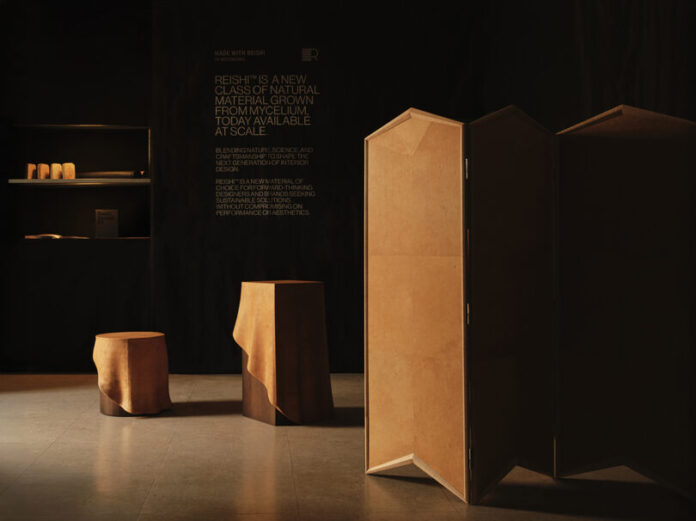Recently named as the largest organism on earth, mushrooms are a dynamic lens through which we can understand the early throes of creation. An entirely different kingdom of creature, the mycelium networks created by these fascinating organisms can extend for many hundreds of miles, billions of individuals working together to create a livable habitat for us all. Tapping in to the growth pattern of the fungus’ root-like structure, MycoWorks has developed Reishi™, a biomaterial grown from mycelium that’s created for use as a luxury material. At Labò Cultural Project in Milan, MycoWorks unveiled a collection made from Reishi™, presenting a true rival to animal leather that’s strikingly similar to the feel of the real deal. The collection of functional pieces includes works by Studio TOOJ and Fanny Perrier that celebrate the beauty, as well as the malleability, durability, and longevity of Reishi™. With actual growth patterns subtly visible, there is an organic nature to Reishi™ that is felt immediately.
From Studio TOOJ, the DUK x Reishi™ collection is shown in stark relief, dramatic lighting raking across the smooth surfaces, seemingly draping naturally atop solid wood bases like tablecloths. Including a side table, pedestal, and corner table, DUK x Reishi™ features idealized folds that gracefully fall to the floor, undulating softly in a surreal manner.

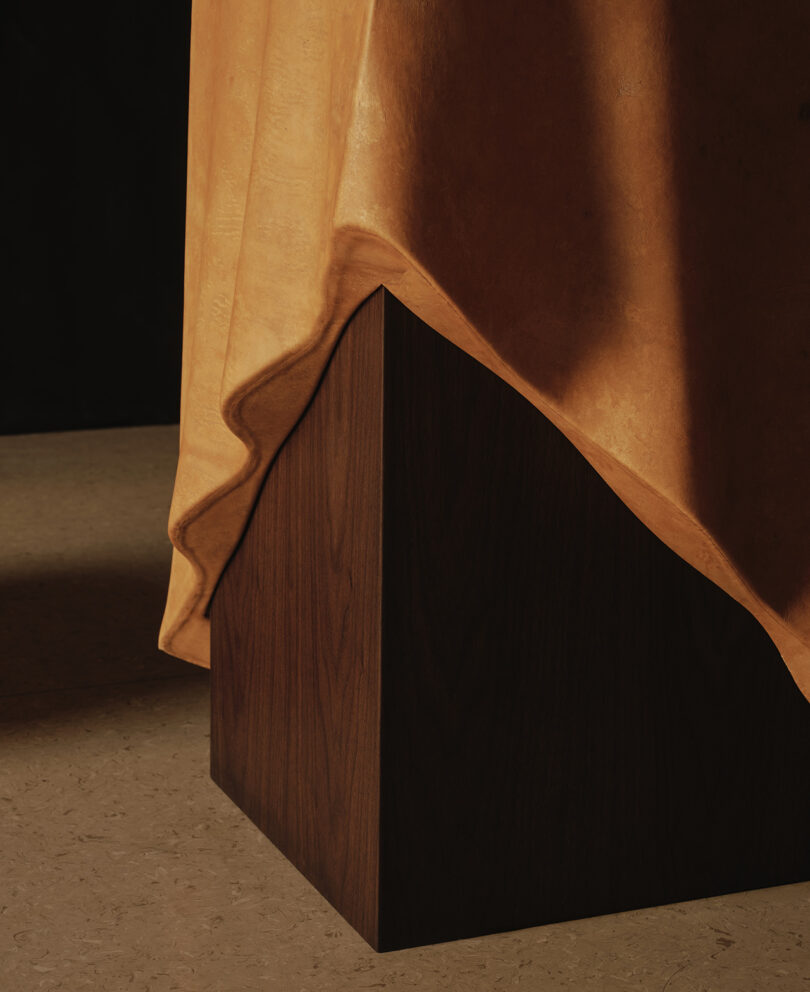
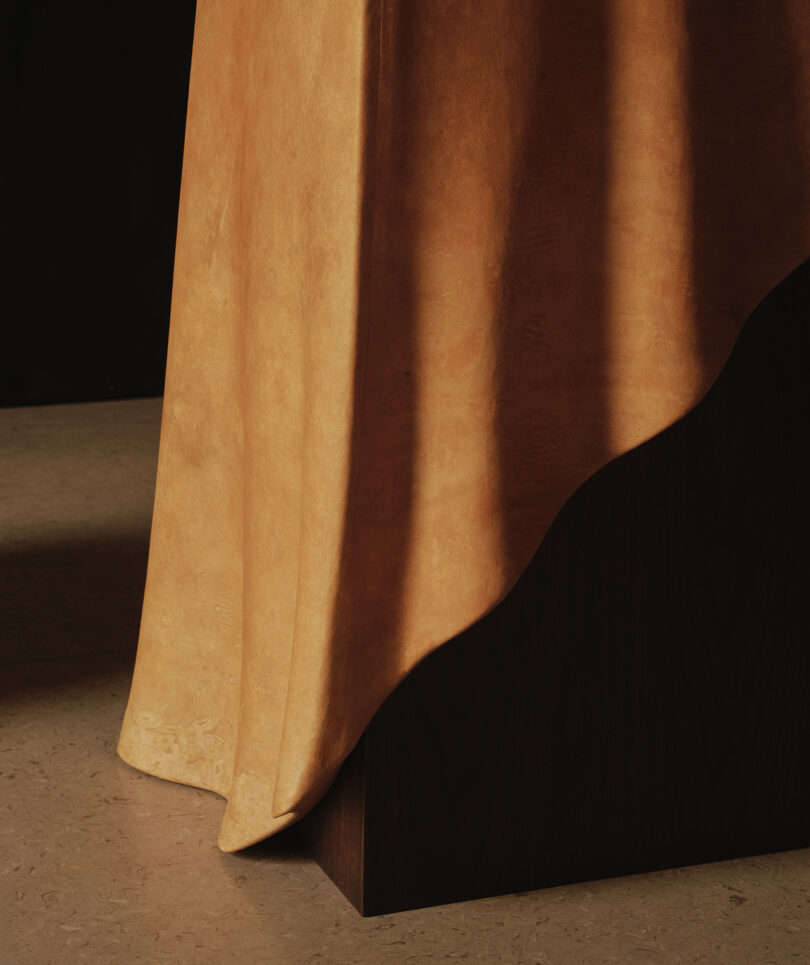
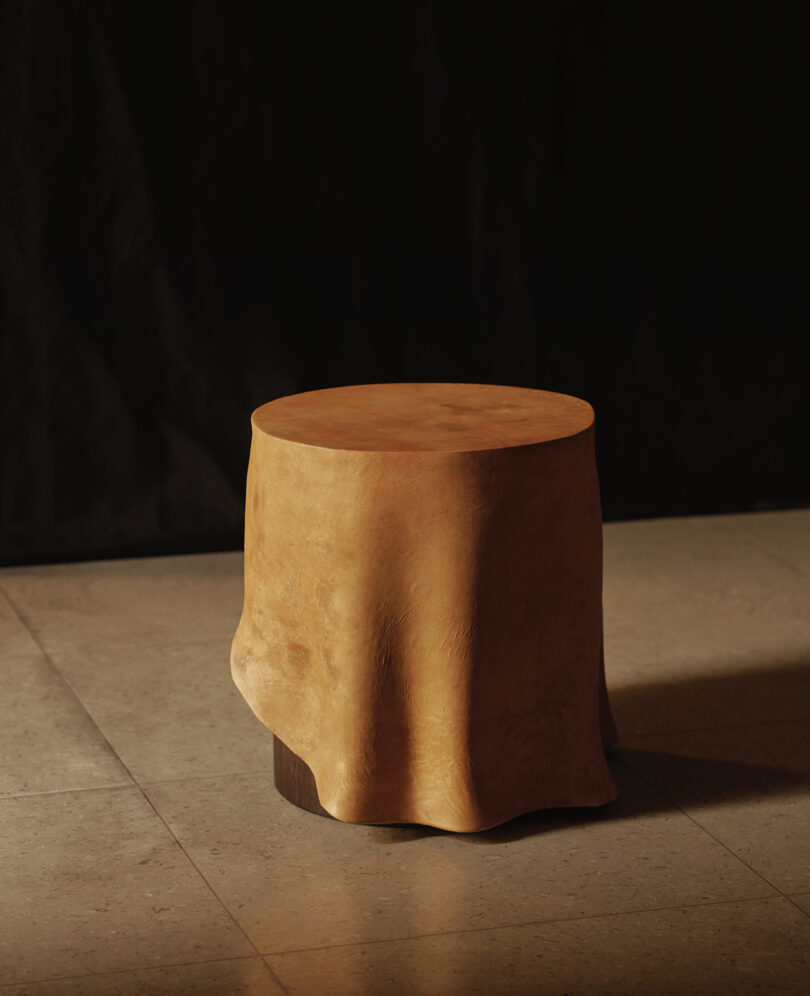
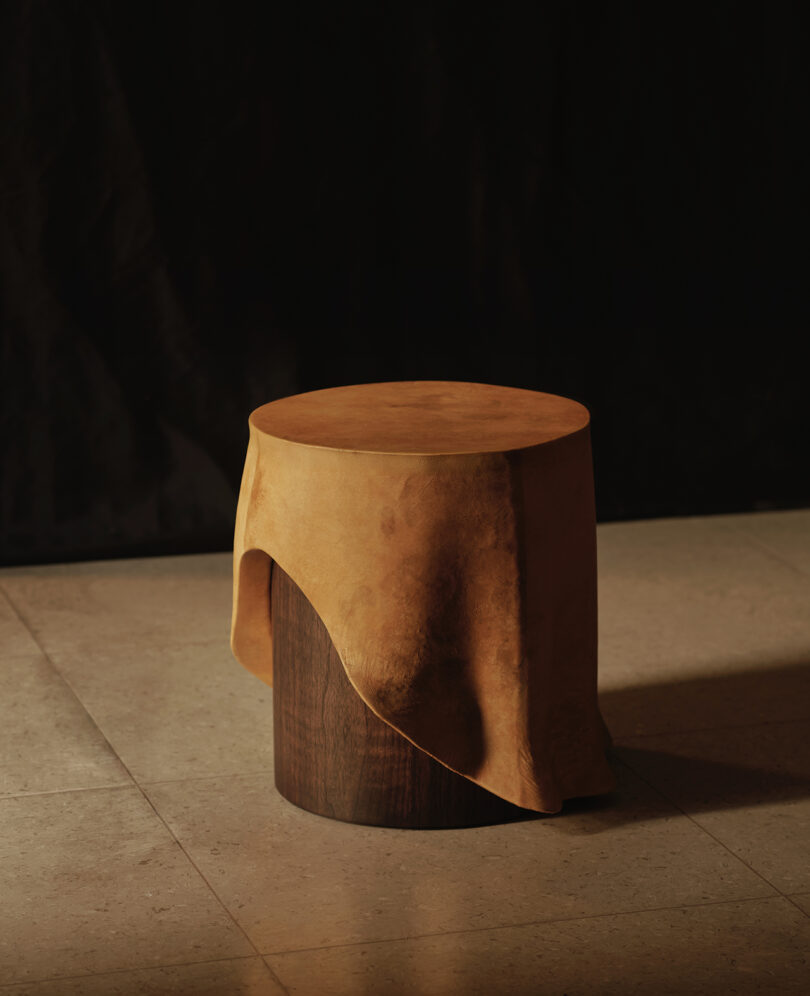
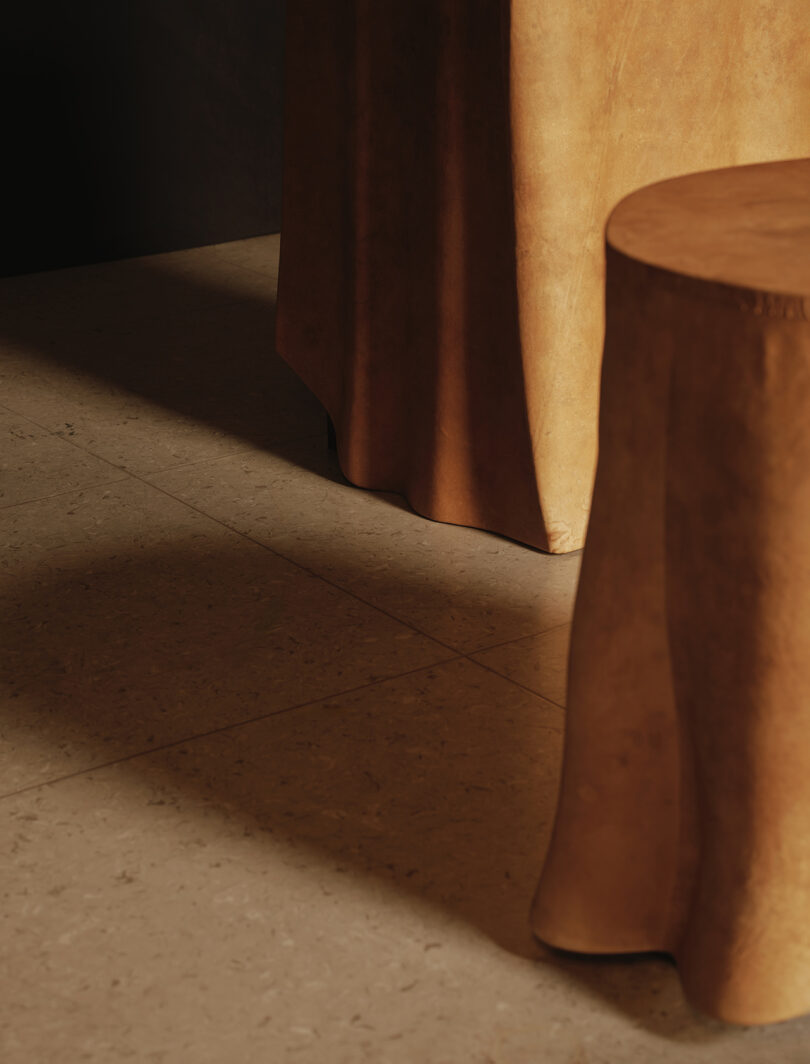
In addition to Studio TOOJ’s work, Fanny Perrier showcased their Mycelium Paravent, a neo-classical six-panel folding screen that gives nod to 1930s ornamental screens from designers like Jean-Michel Frank. In lieu of leather or parchment, typical material coverings of this time, Reishi™ adorns each recessed panel with a textured appearance.
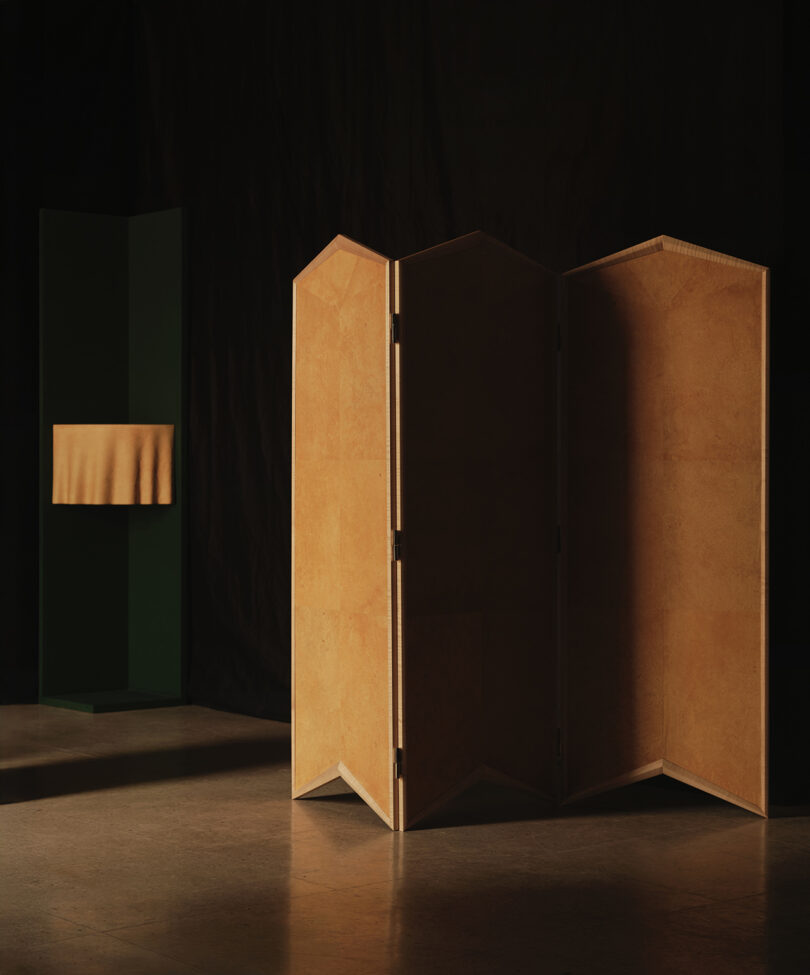
Unlike other leather alternatives, Reishi™ just seems to fit – a naturally occurring, fast-growing, sustainable alternative that has all the versatility and softness of the original without the complicated ethical considerations of animal leather. Perhaps in a couple of years, we’ll come to the conclusion that mushrooms have rights too. Until then, this seems like a promising and inspirational precedent to set for the leather industry. A field notoriously resistant to change, relatively similar to when it was first developed thousands of years ago.
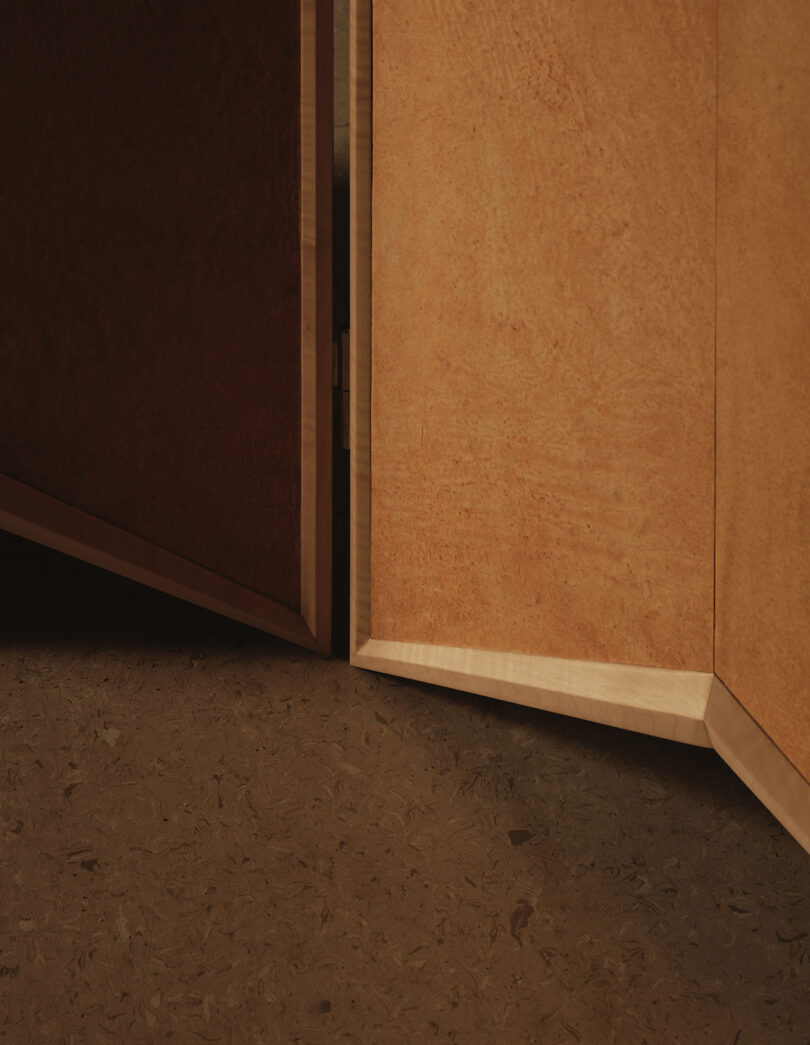
MycoWorks is built on the skill of Philip Ross, working with “biotechniques” designed to turn materiality in a more holistic direction. He began in the forests of upstate New York, building his mycology skills and learning to forage. His subsequent work as a hospice caregiver during the HIV crisis in San Francisco led him to understand the benefits of reishi mushrooms, which he began growing for medicinal purposes. The growth patterns of the reishi were extraordinary, expressions of the specific humidity, temperature, and environment in which they exist. A poetic leap, Ross coined the term mycotecture, to describe the building of structures and forms from mushrooms. He asked artist, writer, and longtime collaborator Sophia Wang to join him in making MycoWorks a reality. Ten years later, the brand has blossomed into a research and development powerhouse, bringing marked change to the industry at large. “As the years go on, you have to keep reinvesting in what you’re in it for. It took a lot of reflection on the journey about what was really driving me, and then bringing that forward so it could be my motivation and how I focused my contributions. And that was a really important moment, and it involves being very honest about who you are in the project,” notes Wang.
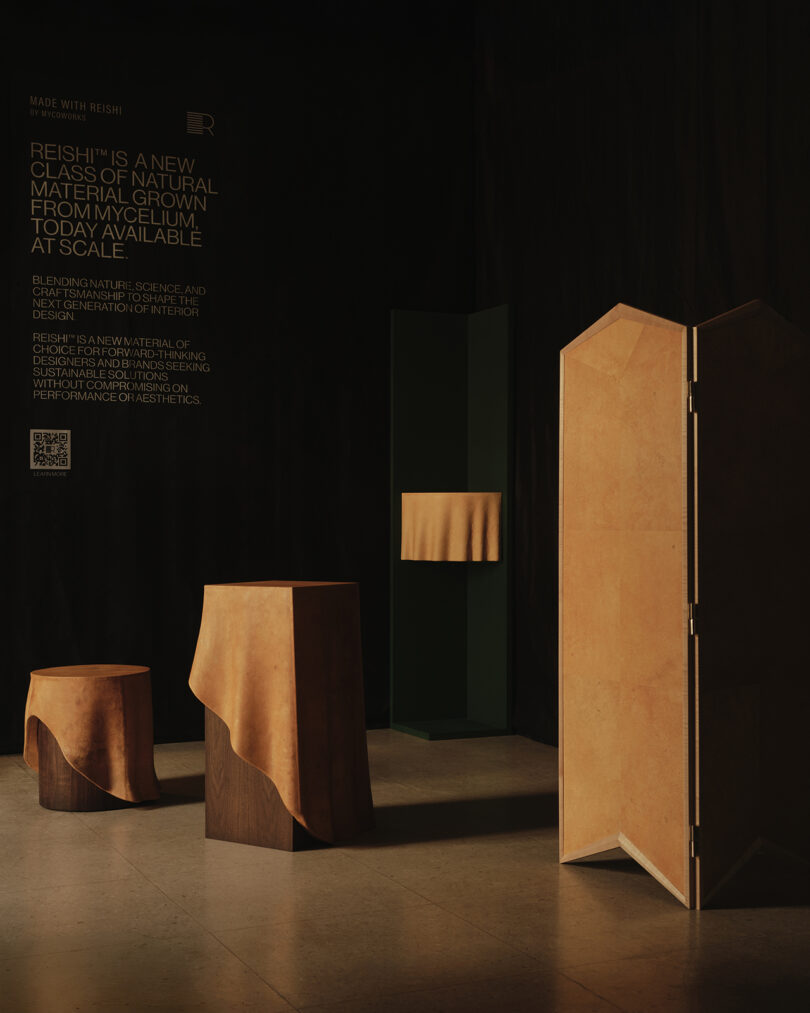
To learn more about Reishi™ by MycoWorks, or the work by Studio TOOJ and Fanny Perrier, please visit mycoworks.com.
Photography by Felix Speller for MycoWorks.
